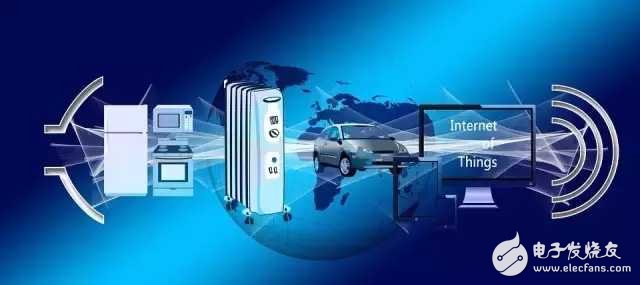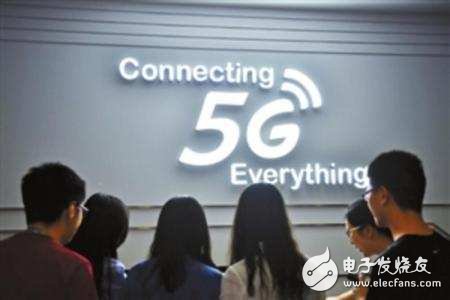2016 is a very important year for the development of the Internet of Things. A series of major events occur frequently. In 2017, the development of the Internet of Things is bound to become more complicated. If you don't have the first time to understand its development key, it may affect the strategic layout of the year. In this article, we have sorted out 8 key points for everyone, which helps us to see the clouds, clear our ideas, and grasp the key points.

1. Scale: continuous huge
According to Garnter's report, by 2020, there will be 26 billion IoT devices worldwide; according to IDC's report, the global IoT market will reach US$1.7 trillion; according to GE's prediction, China's IoT market volume It will reach $166 billion.
The data is the most intuitive and attractive. In the next few years, the Internet of Things will become a huge industry with a connected equipment scale of nearly 30 billion and a revenue scale of more than one trillion US dollars.
2. Smart home: the direction of development will become more and more clear
The development direction of smart homes will become more and more clear, and the transformation from hardware to software trends is becoming more and more obvious.
â— Small household appliances will become the focus of future intelligentization. Small household electrical appliances are cheaper. Even after being intelligent, the price will not exceed the acceptance of consumers, and the technical difficulty of products is low. Internet companies are easy to intervene and can pass product costs. Sales quickly open the market;
â— The era of hardware zero profit will be officially opened, and services will become the core competitiveness. As the level of intelligence of products continues to increase, the importance of services will exceed hardware;
â— Product design ideas will change, functions will be integrated into the mainstream, and product function integration can reduce the cost of consumption. The cost of a multi-purpose device is much smaller than the cost of purchasing a variety of smart home devices.
3. Operators: Promoting the rapid development of the Internet of Things
Operators have always been close partners of the Internet of Things. With the development of the Internet of Things, it is difficult to leave the operators. The Internet of Things market is a big cake, and operators must hope to divide one.
In terms of technology deployment, operators are actively deploying and promoting NB-IOT technology. In addition to advancing the agreement, major operators are also frequently recruiting in the aspects of IoT terminal products, cloud platforms, ecosystem construction, and car networking.
There is also a simple and straightforward way to invest or acquire. Operators accelerate the revenue growth of the Internet of Things market through mergers and acquisitions and investment in IoT companies.
4. Low-power wide-area network: IoT technology needs
In order to push the Internet of Things to a larger scale, it is of course inseparable from low-power WAN. Low-power wide-area network is an IoT network technology that emerges for the long-distance and low-power communication needs of the Internet of Things.
Lora, NB-IoT, Weigthless, and Sigfox are all low-power wide-area network technologies. It has the advantages of long transmission distance, low node power consumption, simple network structure, low operation and maintenance cost.
2017 is expected to become the first year of NB-IoT commercial use, and we are very hopeful that the first commercial NB-IoT network will be built, probably in the first quarter.
5. Spectrum resources: focus on new issues
For IoT or communication systems, spectrum resources are very important. With the continuous development of the Internet of Things, equipment continues to increase, the amount of data continues to increase, and the demand for spectrum resources is also increasing. In addition, some special applications require specialized spectrum resources such as car networking. The shortage of spectrum resources has become an important bottleneck restricting the development of the Internet of Things.
Therefore, scientific planning of spectrum resources, development to higher frequency bands, improvement of spectrum resource utilization efficiency, and the adoption of gradually mature dynamic spectrum allocation methods may be more effective ways.

6. Safety and regulation: the top priority of the Internet of Things
The Internet of Things technology is booming, smart devices are widely added, and a large amount of data is collected and stored. These are inseparable from security. Whether it is the software installation and upgrade, or the data collection, transmission, storage, may be attacked by hackers. The result is often data breaches, illegal controls, accidents, and so on.
Therefore, the security of the Internet of Things will be a very important observation point in 2017. In 2017, we can continue to observe from the aspects of design improvement, safety accidents, and measures of major manufacturers.
7. 5G: Expected to land

?
The development of the Internet of Things is naturally inseparable from the advancement of communication technology. 5G (fifth-generation mobile communication system), with fast transmission speed (up to 10Gbps), small delay, high reliability, continuous wide-area coverage, high hotspot capacity, low power consumption, etc., is very suitable for the characteristics of the Internet of Things. In 2020, the 5G standard is expected to land.
As a very valuable and revolutionary technology, it is worthy of our continued attention in 2017, because its impact is long-term and far-reaching.
8. Smarter Planet: The Internet of Things continues to penetrate
The Internet of Things will revolutionize the work and lifestyle of the entire human race. The idea of ​​building a smarter planet has therefore been proposed. It includes ideas such as smart airports, smart banks, smart railways, smart cities, smart power, smart grids, and smart energy.
Internet of Things technology, which penetrates into all walks of life, will bring about broader changes. Integrate the “Internet of Things†through supercomputers and cloud computing to integrate human society with physical systems. On this basis, human beings can manage production and life in a more sophisticated and dynamic way to achieve a "smart" state.
In 2017, we continue to focus on more systems and how to become more “smart†under the penetration of IoT technology.
UPS-Charged Sinusoidal Inverter
Ups-Charged Sinusoidal Inverter,Inverter With Charger,Car Power Inverter,Inverter Off-Grid
Hangzhou Saintish Technology Co.,Ltd. , https://www.saintishtech.com